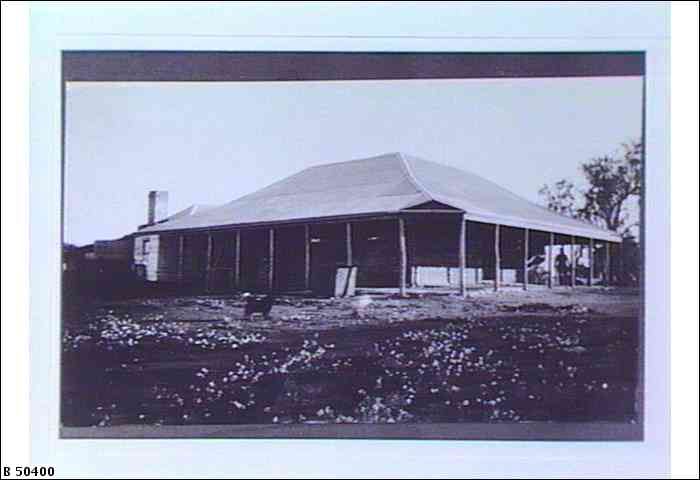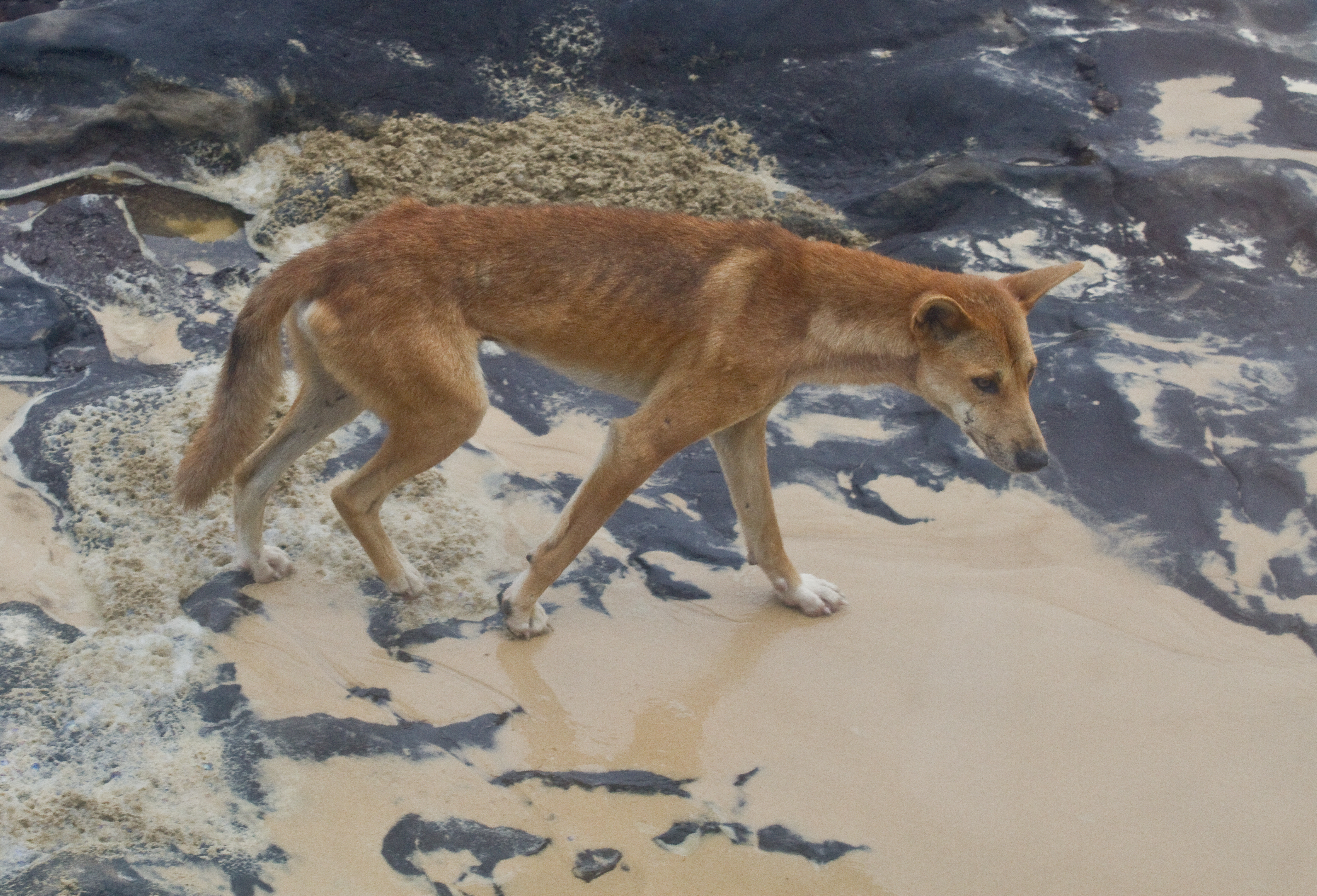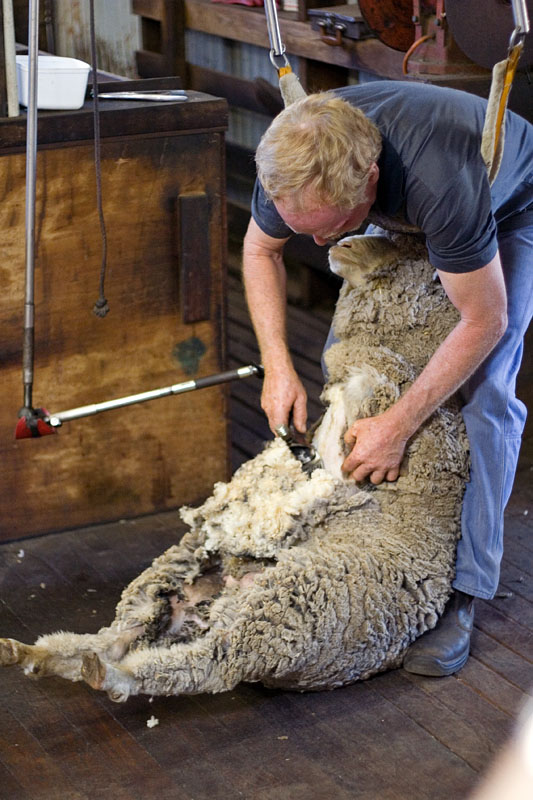|
Parakylia
Parakylia Station is a pastoral lease that once operated as a sheep station but now operates as a cattle station in outback South Australia. Description It is located approximately west of Roxby Downs and south of William Creek. The property shares boundaries with Mount Eba, Billa Kalina and Millers Creek Stations to the north, Mount Vivian to the west and Roxby Downs Station to the south and east. It is also situated within the Woomera Rocket Range, and the Dingo Fence passes through the property. The country is composed of open tablelands vegetated with saltbush, cottonbush, myall, mulga and sandalwood. The area is interspersed with sand ridges, but has several ephemeral creeks and some swamp areas that hold some surface water. History The name of the property is a corruption of the traditional owners' word ''parakilia'' which is used to describe the succulent annual portulacaceous plants, of the genus Calandrinia that are found in the area. The station was estab ... [...More Info...] [...Related Items...] OR: [Wikipedia] [Google] [Baidu] |
Parakylia2
Parakylia Station is a pastoral lease that once operated as a sheep station but now operates as a cattle station in outback South Australia. Description It is located approximately west of Roxby Downs and south of William Creek. The property shares boundaries with Mount Eba, Billa Kalina and Millers Creek Stations to the north, Mount Vivian to the west and Roxby Downs Station to the south and east. It is also situated within the Woomera Rocket Range, and the Dingo Fence passes through the property. The country is composed of open tablelands vegetated with saltbush, cottonbush, myall, mulga and sandalwood. The area is interspersed with sand ridges, but has several ephemeral creeks and some swamp areas that hold some surface water. History The name of the property is a corruption of the traditional owners' word ''parakilia'' which is used to describe the succulent annual portulacaceous plants, of the genus Calandrinia that are found in the area. The station was establi ... [...More Info...] [...Related Items...] OR: [Wikipedia] [Google] [Baidu] |
Billa Kalina
Billa Kalina Station is a pastoral lease that once operated as a sheep station but now operates as a cattle station in outback South Australia. It is located approximately north west of Roxby Downs and south east of Coober Pedy. The property shares boundaries with Anna Creek to the north, Stuart Creek Stations to the east, Parakylia to the south and Miller's Creek Station to the west. It is also situated within the Woomera Rocket Range and the dog fence passes through the property. Currently the property includes the Millers' Creek lease and occupies an area of . It has been run by the same family for 70 years and is running approximately 2,000 head of shorthorn cattle and about 3,000 head of Dorper ewes all of which are raised in an organic environment. In 2012 the property was owned by Colin Greenfield. The property was open for application in 1937. Billa Kalina encompassing an area of along with another stations that were formerly part of the lease now called Mudla St ... [...More Info...] [...Related Items...] OR: [Wikipedia] [Google] [Baidu] |
Arcoona
Arcoona or Arcoona Station is a pastoral lease that operates as a sheep station. It is located about north east of Woomera in the outback of South Australia, The station occupies an area of . The station was founded prior to 1880 and was owned by Mr A. M. Wooldridge in 1880. Wooldridge owned the Parakylia lease that he had established and then sold the western portion and kept the balance himself and renamed as Arcoona. The neighbouring properties are Wirraminna to the south and Andamooka Station to the north. History The pastoralist James Gemmell who had been managing Mundi Mundi Station left to take over Arcoona in 1893. The horse ''Discussion'' by ''Light Artillery'' from ''Small Talk'' was bought in 1906 and sent to Arcoona to stud. Richardson paid 190 guineas for the sire. It was sold in 1909 by Messrs. Richardson and Gemmell to John Pick of Terowie, who would be elected to the House of Assembly while at Arcoona. At the time the station was stocked with 12,000 sh ... [...More Info...] [...Related Items...] OR: [Wikipedia] [Google] [Baidu] |
List Of Ranches And Stations
This is a list of ranches and sheep and cattle stations, organized by continent. Most of these are notable either for the large geographic area which they cover, or for their historical or cultural importance. West Africa *Obudu Cattle Ranch * SODEPA cattle ranches in Cameroon Australia ''Station'' is the term used in Australia for large sheep or cattle properties. New South Wales * Borrona Downs Station *Brindabella Station * Caryapundy Station * Cooplacurripa Station * Corona Station *Elsinora *Momba Station * Mount Gipps Station * Mount Poole Station *Mundi Mundi *Nocoleche * Oxley Station *Poolamacca Station *Salisbury Downs Station * Sturts Meadows Station *Thurloo Downs * Toorale Station *Uardry *Urisino *Yancannia Station Northern Territory * Alexandria Station *Ambalindum *Alroy Downs *Amburla *Amungee Mungee *Andado *Angas Downs Indigenous Protected Area *Anthony Lagoon * Argadargada Station *Austral Downs *Auvergne Station * Ban Ban Springs Station *Banka Banka Station ... [...More Info...] [...Related Items...] OR: [Wikipedia] [Google] [Baidu] |
Mount Eba Station
Mount Eba Station is a pastoral lease in outback South Australia that operates as a sheep station. It is located approximately north west of Roxby Downs and south east of Coober Pedy. It shares boundaries with Millers Creek Station to the north, The Twins Station to the west, Bon Bon Reserve to the south, and Parakylia Station to the east. The property is named for the solitary hill that rises from the surrounding plains. The plains are mostly vegetated with mulga and saltbush, with salt pans interspersed throughout. Currently the property occupies an area of . History Mount Eba was established by Price Maurice in 1874. At this time it encompassed as area of but was extremely isolated and had uncertain rainfall. Despite the high costs Maurice sank 83 wells of which 36 produced good water. The property was stocked intensively from 1878 to 1880, with numerous improvements, including the construction of buildings and a new woolshed, being completed. In 1879 there were ... [...More Info...] [...Related Items...] OR: [Wikipedia] [Google] [Baidu] |
The Chronicle (Adelaide)
''The Chronicle'' was a South Australian weekly newspaper, printed from 1858 to 1975, which evolved through a series of titles. It was printed by the publishers of '' The Advertiser'', its content consisting largely of reprints of articles and Births, Marriages and Deaths columns from the parent newspaper. Its target demographic was country areas where mail delivery was infrequent, and businesses which serviced those areas. ''History'' ''South Australian Weekly Chronicle'' When ''The South Australian Advertiser'' was first published, on 12 July 1858, the editor and managing director John H. Barrow also announced the ''South Australian Weekly Chronicle'', which published on Saturdays. ''South Australian Chronicle and Weekly Mail'' On 4 January 1868, with the installation of a new steam press, the size of the paper doubled to four sheets, or sixteen pages and changed its banner to ''The South Australian Chronicle and Weekly Mail''. The editor at this time was William Hay, and i ... [...More Info...] [...Related Items...] OR: [Wikipedia] [Google] [Baidu] |
Dingo
The dingo (''Canis familiaris'', ''Canis familiaris dingo'', ''Canis dingo'', or ''Canis lupus dingo'') is an ancient (Basal (phylogenetics), basal) lineage of dog found in Australia (continent), Australia. Its taxonomic classification is debated as indicated by the variety of scientific names presently applied in different publications. It is variously considered a form of domestic dog not warranting recognition as a subspecies, a subspecies of dog or wolf, or a full species in its own right. The dingo is a medium-sized Canis, canine that possesses a lean, hardy body adapted for speed, agility, and stamina. The dingo's three main coat colourations are light ginger or tan, black and tan, or creamy white. The skull is wedge-shaped and appears large in proportion to the body. The dingo is closely related to the New Guinea singing dog: their lineage split early from the lineage that led to today's domestic dogs, and can be traced back through the Maritime Southeast Asia to Asia. ... [...More Info...] [...Related Items...] OR: [Wikipedia] [Google] [Baidu] |
Sheep Shearing
Sheep shearing is the process by which the woollen fleece of a sheep is cut off. The person who removes the sheep's wool is called a '' shearer''. Typically each adult sheep is shorn once each year (a sheep may be said to have been "shorn" or "sheared", depending upon dialect). The annual shearing most often occurs in a shearing shed, a facility especially designed to process often hundreds and sometimes more than 3,000 sheep per day. Sheep are shorn in all seasons, depending on the climate, management requirements and the availability of a woolclasser and shearers. Ewes are normally shorn prior to lambing in the warmer months, but consideration is typically made as to the welfare of the lambs by not shearing during cold climate winters. However, in high country regions, pre lamb shearing encourages ewes to seek shelter among the hillsides so that newborn lambs aren't completely exposed to the elements. Shorn sheep tolerate frosts well, but young sheep especially will suffe ... [...More Info...] [...Related Items...] OR: [Wikipedia] [Google] [Baidu] |
Post Office
A post office is a public facility and a retailer that provides mail services, such as accepting letters and parcels, providing post office boxes, and selling postage stamps, packaging, and stationery. Post offices may offer additional services, which vary by country. These include providing and accepting government forms (such as passport applications), and processing government services and fees (such as road tax, postal savings, or bank fees). The chief administrator of a post office is called a postmaster. Before the advent of postal codes and the post office, postal systems would route items to a specific post office for receipt or delivery. During the 19th century in the United States, this often led to smaller communities being renamed after their post offices, particularly after the Post Office Department began to require that post office names not be duplicated within a state. Name The term "post-office" has been in use since the 1650s, shortly after the legali ... [...More Info...] [...Related Items...] OR: [Wikipedia] [Google] [Baidu] |
Traditional Owners
Native title is the designation given to the common law doctrine of Aboriginal title in Australia, which is the recognition by Australian law that Indigenous Australians (both Aboriginal Australian and Torres Strait Islander people) have rights and interests to their land that derive from their traditional laws and customs. The concept recognises that in certain cases there was and is a continued beneficial legal interest in land held by Indigenous peoples which survived the acquisition of radical title to the land by the Crown at the time of sovereignty. Native title can co-exist with non-Aboriginal proprietary rights and in some cases different Aboriginal groups can exercise their native title over the same land. The foundational case for native title in Australia was ''Mabo v Queensland (No 2)'' (1992). One year after the recognition of the legal concept of native title in ''Mabo'', the Keating Government formalised the recognition by legislation with the enactment by the Au ... [...More Info...] [...Related Items...] OR: [Wikipedia] [Google] [Baidu] |
Daily Commercial News
''Daily Cargo News'' (DCN) is a monthly Australian shipping, trade, transport and logistics focused magazine, published by Paragon Media. First published in 1891 as ''Daily Commercial News'', ''Daily Cargo News'' is Australia's longest running national newspaper. History ''Daily Commercial News'' Howard Ignatius Moffat, born in Redfern, New South Wales in 1861, traveled to the United States at an early age to study American business methods. He returned to Sydney in 1887 intent on establishing a shipping newspaper, founding Shipping Newspapers Ltd under the name ''The Daily Shipping Paper'' in November 1890 with business partner Jeremiah Roberts. On Monday 13 April 1891, the first edition of ''Daily Commercial News'' (DCN) was published.. On Saturday 30 April 1892 the newspaper changed its title to ''Daily Commercial News and Shipping List''. Moffat remained the driving force behind the newspaper until ill health and failing eyesight forced his retirement in 1935. His retirement ... [...More Info...] [...Related Items...] OR: [Wikipedia] [Google] [Baidu] |
South Australian Chronicle And Weekly Mail
''The Chronicle'' was a South Australian weekly newspaper, printed from 1858 to 1975, which evolved through a series of titles. It was printed by the publishers of '' The Advertiser'', its content consisting largely of reprints of articles and Births, Marriages and Deaths columns from the parent newspaper. Its target demographic was country areas where mail delivery was infrequent, and businesses which serviced those areas. ''History'' ''South Australian Weekly Chronicle'' When ''The South Australian Advertiser'' was first published, on 12 July 1858, the editor and managing director John H. Barrow also announced the ''South Australian Weekly Chronicle'', which published on Saturdays. ''South Australian Chronicle and Weekly Mail'' On 4 January 1868, with the installation of a new steam press, the size of the paper doubled to four sheets, or sixteen pages and changed its banner to ''The South Australian Chronicle and Weekly Mail''. The editor at this time was William Hay, and i ... [...More Info...] [...Related Items...] OR: [Wikipedia] [Google] [Baidu] |





